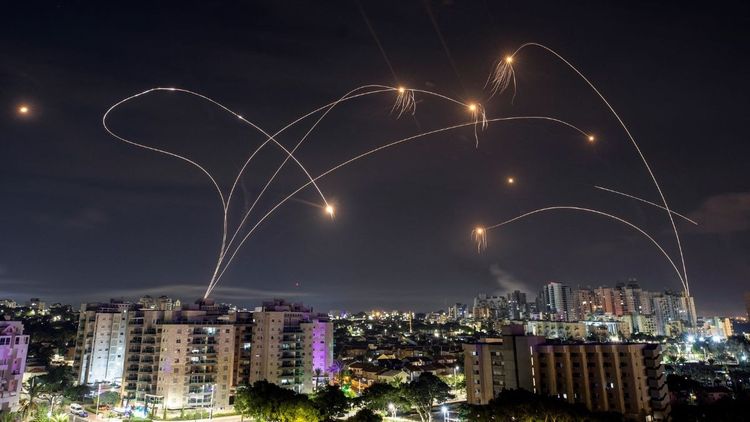Israel-Palestine War: What is Israel's 'Iron Dome' and how Hamas' missiles breached it

The Iron Dome defense system, which is well-known in Israel, faced a serious challenge from Hamas' rocket attack. This is a huge setback for a defense system that had previously claimed to have a high level of success in stopping incoming missiles. Although the advanced system was able to stop many of the missiles that Hamas launched, some missiles slipped through, resulting in numerous casualties on the Israeli side. The assault exposed some flaws in the superlative defense system. How and why did this happen?
What was the beginning of it all?
Recently, Hamas, a group of militants from Palestine, carried out an unusual and extreme attack on Israel by launching more than 5,000 rockets from Gaza into Israel within just 20 minutes. This enormous amount of rockets presented a real difficulty for the Iron Dome, the defense system used by Israel, as it could not stop all the missiles. In past conflicts, the Iron Dome had proven its efficiency by intercepting 85% of rockets in 2012 and 90% in 2014, despite facing thousands of rockets from Gaza.
Furthermore, Hamas has advanced its missile technology throughout the years by enhancing the distance its weaponry can cover. This includes major locations in Israel, such as Tel Aviv and Jerusalem. Due to this progression, Israel's defense mechanisms have faced increased stress.
The Iron Dome has shown that it can counteract threats, but its financial situation is a problem. Every time Israel uses a Tamir missile to stop a Hamas rocket, it costs much more than the rockets themselves. As a result, analyzing the costs has become complicated.
Israel has improved its defense system by enlarging its range, upgrading its ability to identify threats, and adjusting its strategies for handling rapid attacks. However, the effectiveness of the defense system was put to the test when it confronted a barrage of 3,000 projectiles (Hamas claimed it was 5,000 projectiles) in a brief period of time. Due to the massive number of rockets, some were able to penetrate the defense system and hit Israeli areas, resulting in significant damage.
Iron Dome's background story Iron Dome is a modern missile defense system created by Israel. It was designed to intercept and destroy rockets and other threats that come from the air. The system has been in development since the early 2000s and was first deployed in 2011. Its success has made it one of the most effective missile defense systems in the world. Before Iron Dome, Israel relied on older technologies for missile defense, such as the Patriot missile system and the Arrow missile system. However, these systems were expensive and had limitations in their capability to intercept shorter-range missiles like the Qassams and Katyushas that Hamas and Hezbollah often fired at Israeli cities and towns. Iron Dome uses advanced algorithms to determine the trajectory of incoming rockets and makes a split-second decision as to whether or not to intercept them. The system can engage multiple targets simultaneously and has a high success rate, as demonstrated during the 2014 Israel-Gaza conflict when it intercepted around 90 percent of rockets aimed at populated areas. Despite its success, Iron Dome is not infallible. It struggles with the interception of slow-moving or low-flying targets, and its cost per interception is relatively high. However, its effectiveness in protecting Israeli citizens remains a significant achievement in missile defense technology.
Development of the Iron Dome started in December 2007 with the goal of dealing with short-range threats like rockets, drones, planes, and more. The '06 Israeli-Lebanon war made it clear that a reliable air defense system was necessary. By 2011, it was operational and has been invaluable in protecting cities in Israel. The Iron Dome has continuously evolved to keep up with new threats, with improvements to range and flexibility being top priorities. Support from the United States has also been crucial to its success.
Iron Dome comes in various editions. This missile defense system has different versions that are suitable for different types of attacks. These versions have been developed to support military and civil defense. The multiple versions of Iron Dome utilize advanced technology to identify and destroy incoming threats from the sky. Numerous variants of this system have been customized to meet the demands of modern warfare and provide better protection to the communities. The versatility of Iron Dome has made it a valuable asset in regions that face frequent missile attacks.
The Iron Dome has made changes to meet various needs and environments. The I-DOME is a portable version that can do everything. Its one-truck setup provides safeguarding for motorized or mechanized troops, and defense from the sky for military, industrial and administrative sites. The C-DOME is designed for naval use. It utilizes identical technology to tackle threats at sea and safeguard Israeli ships and other oceanic assets.
Have a look at: A nurse from Kerala got hurt in a Hamas assault while having a video conversation with her partner.
Additionally, take a look at: The recent conflict between Israel and Hamas has resulted in a shocking incident where a German woman named Shani Louk was reportedly forced to walk around naked by Hamas militants. According to reports, Louk was also robbed and had her credit card taken during the ordeal.

















































